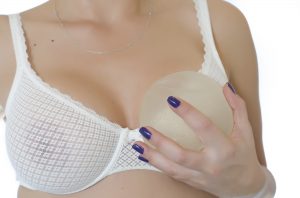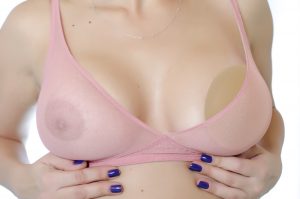 If you have had a mastectomy for breast cancer or are considering one, you may also be considering what to do afterwards. As you explore your options, you owe it to yourself to learn the facts about breast reconstruction surgery as well. This is a very personal decision so take your time in weighing the cost, both emotional and physical. Always make an informed decision when it comes to your body and health.
If you have had a mastectomy for breast cancer or are considering one, you may also be considering what to do afterwards. As you explore your options, you owe it to yourself to learn the facts about breast reconstruction surgery as well. This is a very personal decision so take your time in weighing the cost, both emotional and physical. Always make an informed decision when it comes to your body and health.
What Does Reconstructive Surgery with Mastectomy Entail?
A mastectomy is a surgery that removes all tissue from the breast. In conventional medicine, it is done to prevent cancer spread (although this is somewhat of a misnomer since mastectomy does not remove breast cancer stem cells).
Never the less, more women are opting to get mastectomy each year. And in total, over 300,000 American women annually get breast augmentation, either because of mastectomy or for strictly cosmetic reasons.
Reconstructive surgery after mastectomy can be done either at the time of mastectomy (called an “immediate” reconstructive surgery) or “delayed,” which means the surgery will occur at a later date. The materials used to recreate the breast vary and include silicon, saline or the person’s own tissue.
While reconstruction may help a woman feel more like “herself” after Breast Cancer, there are also quite a few risks associated with it, especially concerning the substances used.
Complications with Silicone Implants

Remember that ANY surgery is an invasive procedure that could increase complications from infection.
In 1992, the United States Food and Drug administration announced a moratorium on silicon implants because of their possible link to rheumatic disease and Breast Cancer. However, as of 2013, certain kinds of silicone implants have been re-approved for use in the United States.
Part of why silicone implants are so harmful is because they don’t just contain silicon. In fact, there are dozens of other chemical substances that may be found in some gels, including formaldehyde and acetone. Silicon-caused nervous system disorders, especially neuropathy on the side where the implant is located, can occur when there is a rupture of the implant or leakage of the material. Silicon leakage can lead to inflammation, fibrosis, and “foreign body reaction,” according to a 2007 study published in Hong Kong Medical Journal. Leakage is so common that many experts recommend either removing or replacing the implant every 8 to 10 years.
Silicone can also be carcinogenic. According to the research, silicon leakage can increase your risk of other kinds of cancer, including lung, colon and pancreatic.
“It’s a neurotoxin,” said Dr. Susan Kolb M.D., F.A.C.S., A.B.I.H.M., an Atlanta-based holistic plastic surgeon and author of the book The Naked Truth About Breast Implants: From Harm to Healing, in a recent interview on Mercola.com. Kolb knows firsthand about the dangers of silicone implants. She was once diagnosed with thoracic outlet syndrome as a result of silicone implant leakage. “Many of the chemicals that Dow Corning [maker of silicone implants] identified in the trials … are carcinogens, and many are neurotoxins. Oddly enough, the plastic surgeons don’t know the list of chemicals that are actually in the gel.”
All is not lost if you are experiencing the negative side effects of silicone implants. “Explantation surgery” can remove implants. In addition, immune system and detox protocols have a good track record for healing side effects once they are removed.
Complications with Saline Implants
Sadly, there are virtually no studies that have critically looked at complications associated with saline implants. According to many experts as well as anecdotal evidence, the problem with saline is not so much with the substance, but what could happen if the valve that is used to fill the implant is damaged through trauma to the chest, like in a car accident or other injury.
If valve malfunction occurs, certain bacteria and mold fungus can get into the implant. There, foreign substances can create biotoxins that can become neurotoxic and even carcinogenic. Symptoms can be similar to those who contract “sick building syndrome” caused by water-damaged buildings.
Another complication of both saline and silicone implants is called “capsular contracture.” This occurs when scar tissue forms around an implant and pulls at it. According to studies conducted at the University of Ontario and others, capsular contracture happens in silicone implants roughly twice as much as it does in saline implants.
Complications with Autologous or “Flap” Reconstruction
Using your own tissue—usually from the belly, buttocks, and/or upper thighs—to reconstruct a breast is called autologous or “flap” reconstruction. Many individuals prefer this kind of reconstruction because the tissue feels most like a regular breast and, according to conventional medicine, it supposedly “lasts a lifetime.”
 Complications can arise with flap reconstruction as well, however. According to Cancer Research UK, complications of autologous reconstructive surgery include infection, flap failure, fluid under the surgery wound, hardening, leakage, unequal breasts if weight changes, and abdominal hernia.
Complications can arise with flap reconstruction as well, however. According to Cancer Research UK, complications of autologous reconstructive surgery include infection, flap failure, fluid under the surgery wound, hardening, leakage, unequal breasts if weight changes, and abdominal hernia.
Some Final Thoughts
Now that you know some of the risks of breast reconstructive surgery, you can make your own decision about how you want to go forward. Remember that any kind of surgery comes with its own cancer metastasis risks. Most women we have coached who have had reconstructive surgery regret going down that road in the long run. I believe that the the best course is always the most natural one, and that means staying away from any kind of invasive procedure whenever possible.
And, if you are a reconstructive surgery candidate, don’t be afraid to consider no reconstruction. I encourage you to read this wonderful article , “Going Flat: Choosing No Reconstruction” posted on BreastCancer.org’s website. It encourages you to learn to be comfortable with your body if you choose no reconstruction. “I don’t care what they take from you as long as I can see your face,” is a common sentiment from partners of Breast Cancer Conquerors.
Embrace your magnificence and your scars – you are beautiful inside and out. In the next installment, I will discuss some other options after a mastectomy and some possible prosthetics to consider.
Part 2: Life After Mastectomy ~ Three Options Besides Reconstructive Surgery
Last week I shared some pretty daunting news about the risks of reconstructive surgery for mastectomy, including the possible harms of both silicone and saline implants as well as the risks of the actual surgery.
Reconstructive surgery is not the only option after mastectomy, however. Here are three other options if you are considering the possibility of NOT going the reconstruction route:
#1 Custom Prosthetics

This is an example of a silicone breast prosthetic for a lumpectomy. Even though silicone is thought to best mimic the shape, feel and weight of real breast tissue, the use of silicone may come with some toxic side effects, even when used externally.
A breast prosthesis or “form” is an artificial body part that is worn inside a bra or is attached to the body. It is designed to simulate the look and feel of an actual breast.
Custom prosthetics are usually fitted by a trained professional or an institution that specializes in creating unique breast prosthetics. They can be designed to fit inside a pocket of a mastectomy bra but most are designed to be temporarily “affixed” to the skin by either strong adhesive or magnets.
While foam or “polyfill” prosthetics can be worn very soon after surgery since it is light-weight, foam’s lightness also comes with some disadvantages. Many women who undergo a single-breast mastectomy may want to wear a prosthetic to restore proper body balance and posture that may lo best when one breast is removed. Some foam prosthetics prove to be too light for this purpose.
While a silicone form may look and feel more like a real breast tissue than foam—and will be closer in weight to a real breast– as we discussed in last week’s blog, silicone itself is a toxic substance. Wearing it close to very sensitive breast-area skin may release toxic chemicals into the system.
The natural oils that the skin emits as well as high body temperature (such as during a work out or on a hot day) may exacerbate any chemical leaching. Although very few studies have been conducted regarding toxic leakage from external silicon prosthetics, the jury is still out when it comes to other external uses of silicone, such as in joint replacement or silicone bakeware.
The U.S. Food and Drug Administration (FDA) stated back in 1979 that silicone is “FDA approved as a food-safe substance.” Yet some cite the sheer lack of any studies whatsoever as reason to suspect that toxins such as heavy metals, siloxane, cylcopentasiloxane (a toxic siloxane derivative), dioctyl phthalate, and other contaminants may leach into food from these containers when exposed to high temperatures. They recommend that, because of the lack of research on external sources of silicone contamination, sensitive individuals should avoid silicone altogether; this would include those who are on a healing journey with breast cancer as well.
Another concern about custom prosthetics is the use of magnets as adhesives. Again, there has been no studies that have linked the magnets used to adhere breast prosthetics to any specific health concerns. That being said, there have been studies that have connected the use of neodymium-iron-boron magnets, which are used in some prosthetics as well as many other commercial products, to harmful consequences for those with heart devices and other EMF-sensitive conditions.
#2 “Off the Shelf” Breast Forms
Off-the-shelf breast “forms” can be purchased “right off the shelf” from a retailer that specializes in non-customized prosthetics as well as post-mastectomy bras, camisoles, swimsuits and leisure or “night” bras that can be worn in lieu of a prosthetic under a nightgown.
The advantage of shelf prosthetics is that they can be easily purchased through insurance. The disadvantage is that normally a woman must wait 4 to 6 weeks post-surgery to be connected to a mastectomy retailer through their conventional doctor or oncologist. Another issue is that “off the shelf” forms are often not as comfortable as fitted forms. This is because the shapes and sizes for these units are standardized and not custom-fitted.
#3 Going “flat”
Going “flat” means using no prosthetics at all. Many woman are choosing to go this route these days, finding empowerment in their new lease on life after breast cancer—and in the new way their bodies look as well.
These women wear their scars with pride as a reminder of their strength throughout their breast cancer journey. Some even choose to get “tittoos” on their scar areas, although I personally do not recommend this. Although some ink companies are creating inks that contain less toxins, most tattoo inks still carry substances that can be very harmful to those with compromised immune systems.
Whatever you look like, be PROUD of who you are!
If you are in the process of making post-mastectomy decisions right now, odds are you have already been through quite a lot up to this point. Be PROUD of your courage and your willingness to explore other options besides the conventional treatments every step of the way!
And whatever choice you decide to make post-mastectomy, remember that when you embrace your scars, you embrace your healthy lifestyle—and your life– after cancer. And you join a large community of empowered women that give you the support you need on your journey forward. Many such empowered women can be found in the comments section of this blog as well as on our Breast Cancer Conqueror Facebook page and at our annual Healing Divas Retreat.
Don’t hesitate to reach out to our growing community of empowered women who are taking charge of their health… naturally!
July 26, 2017
© 2017 Dr. Veronique Desaulniers – All Rights Reserved
 Submitted to for publication to Kettle Moraine Publications by the author, Dr. Veronique Desaulniers, better known as Dr. V, is the founder of The 7 Essentials System ™, a step-by-step guide that teaches you exactly how to prevent and heal Breast Cancer Naturally. To get your F.R.E.E. 7 day mini e-course, and to receive her weekly action steps and inspiring articles on the power of Natural Medicine, visit http://breastcancerconqueror.com/.
Submitted to for publication to Kettle Moraine Publications by the author, Dr. Veronique Desaulniers, better known as Dr. V, is the founder of The 7 Essentials System ™, a step-by-step guide that teaches you exactly how to prevent and heal Breast Cancer Naturally. To get your F.R.E.E. 7 day mini e-course, and to receive her weekly action steps and inspiring articles on the power of Natural Medicine, visit http://breastcancerconqueror.com/.

